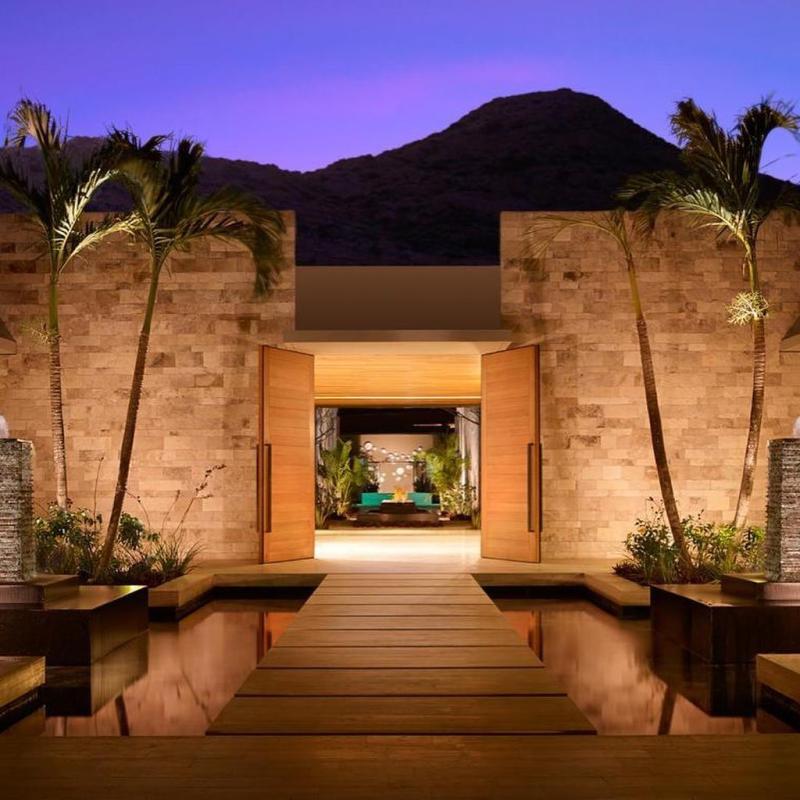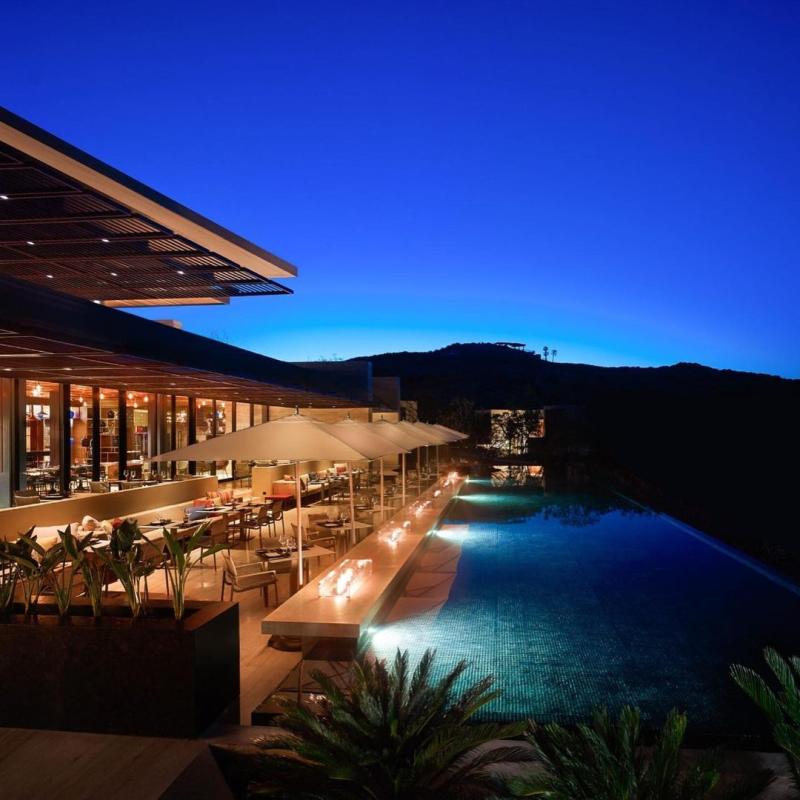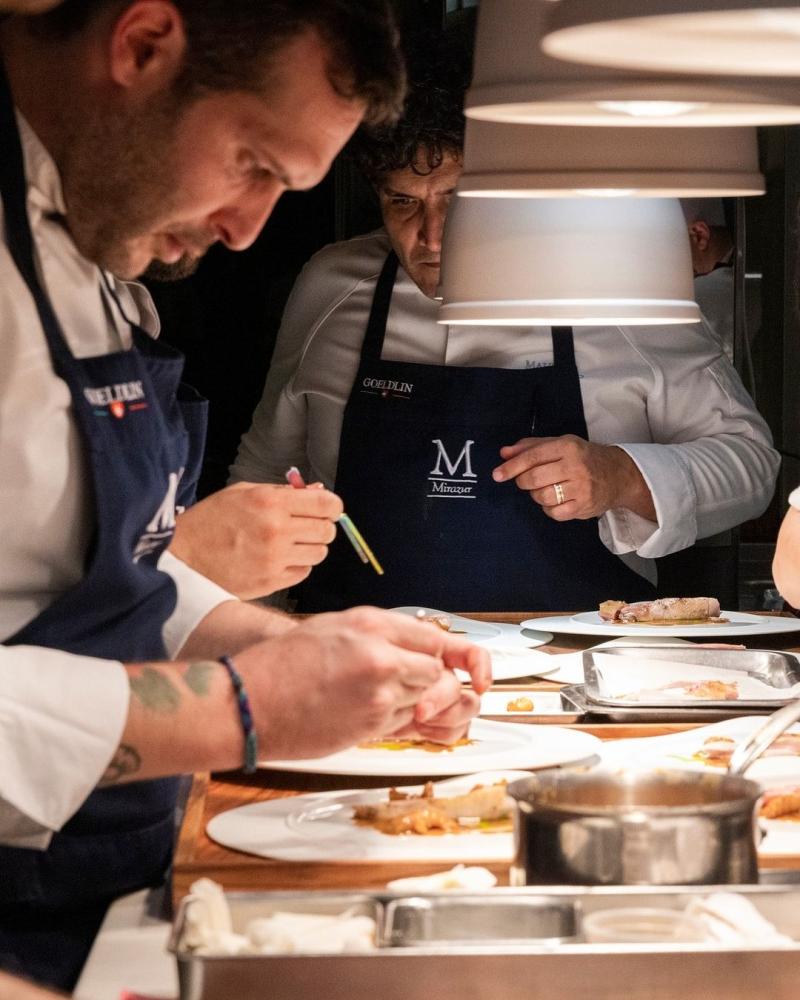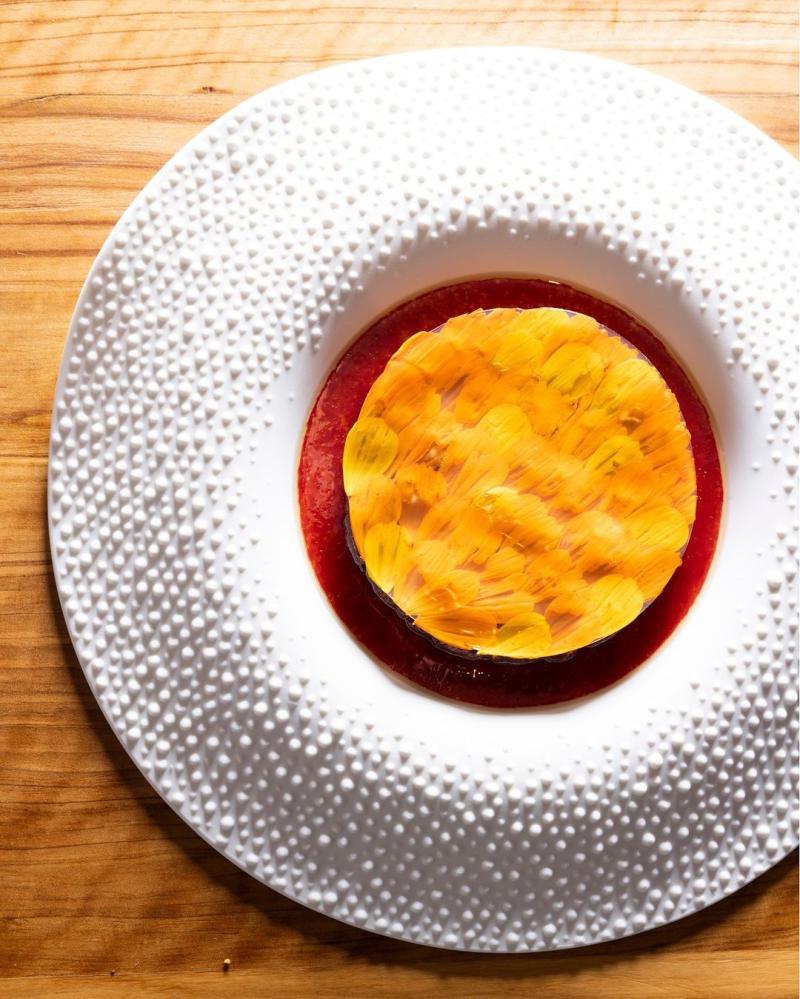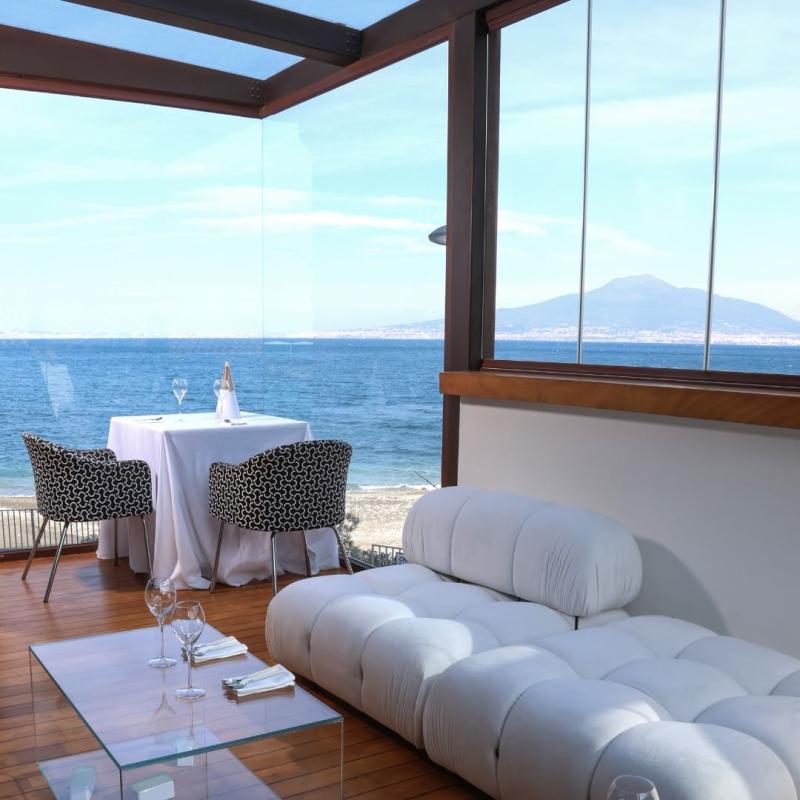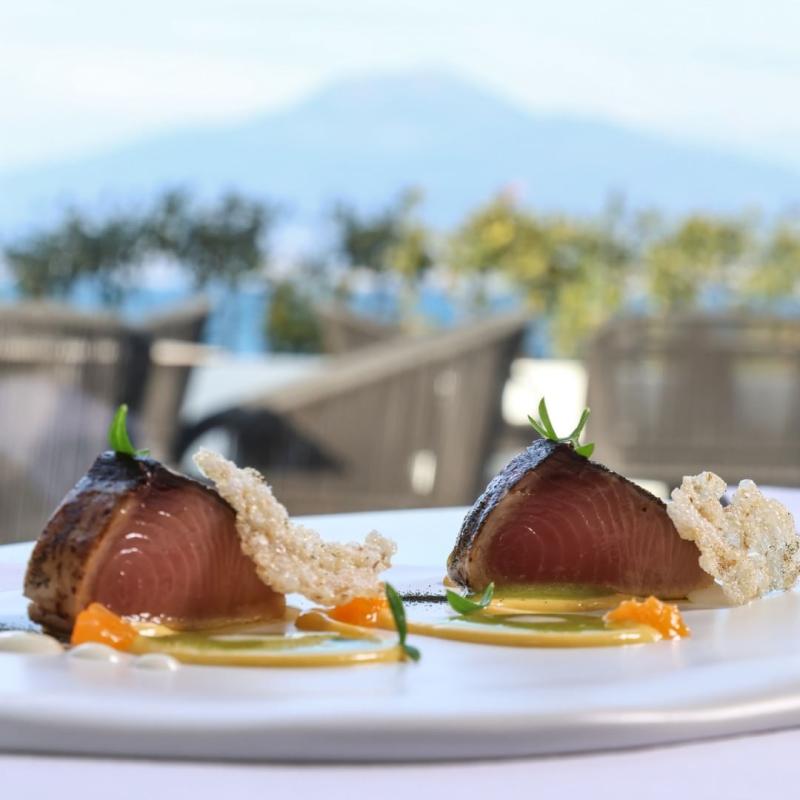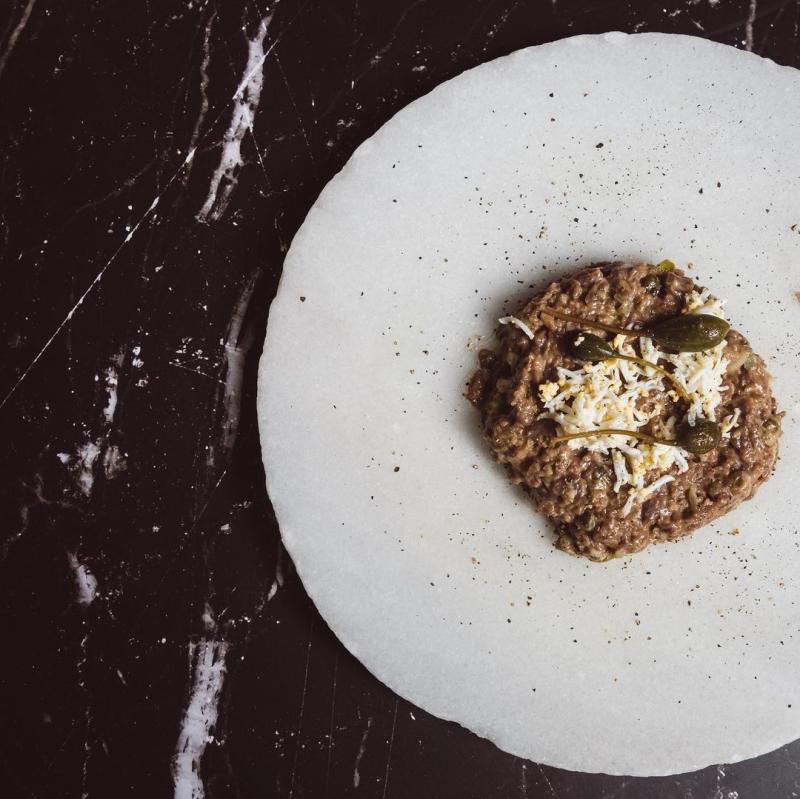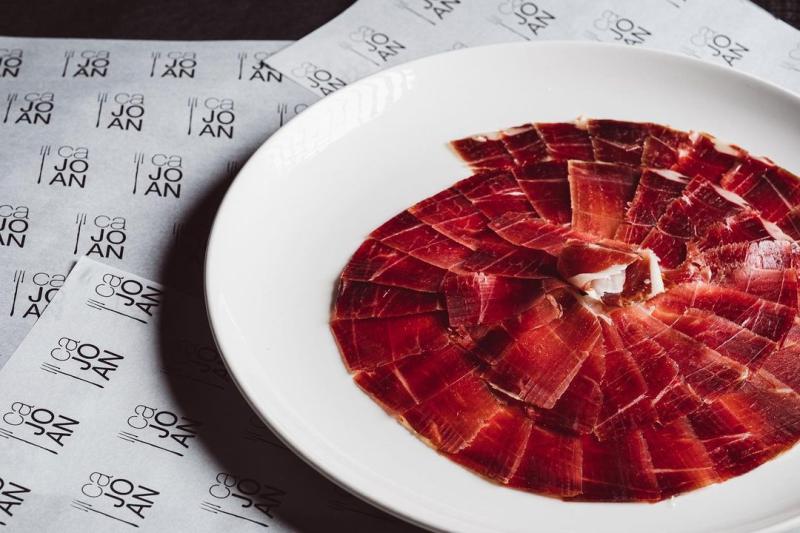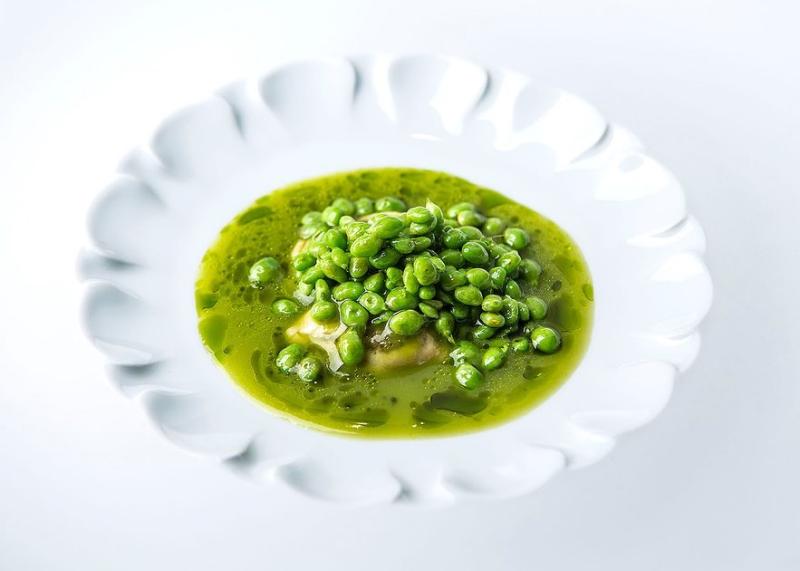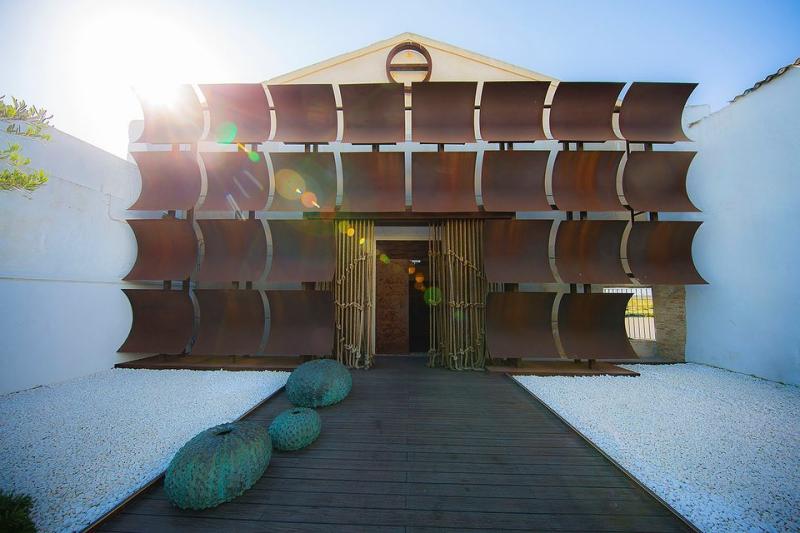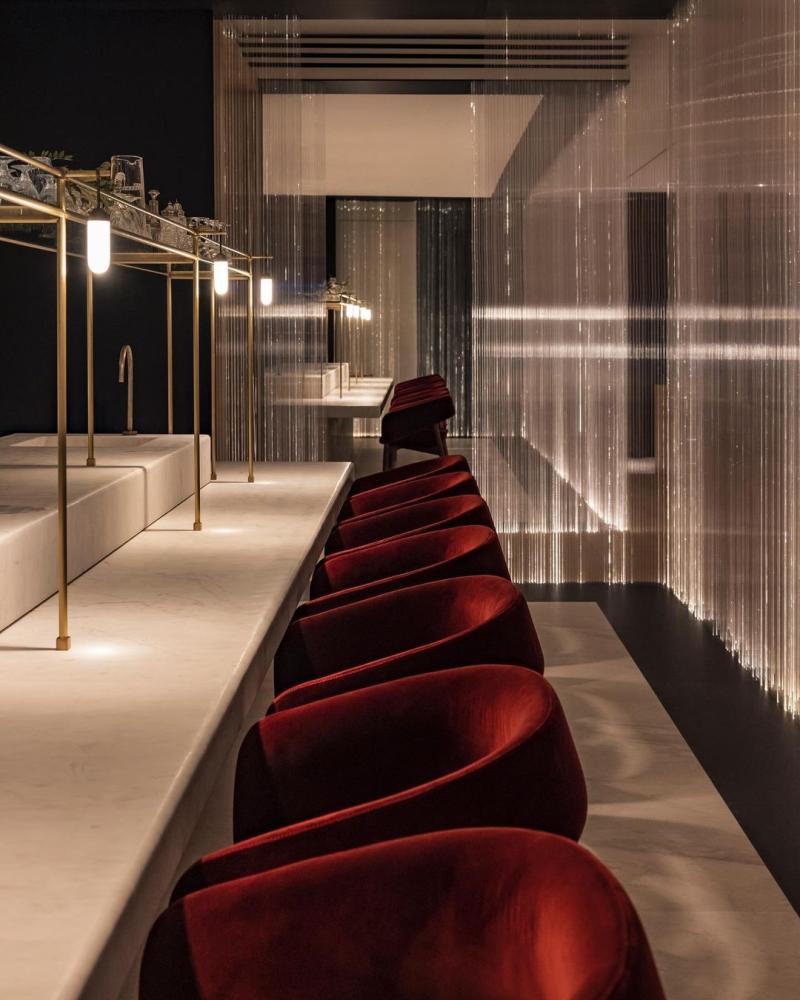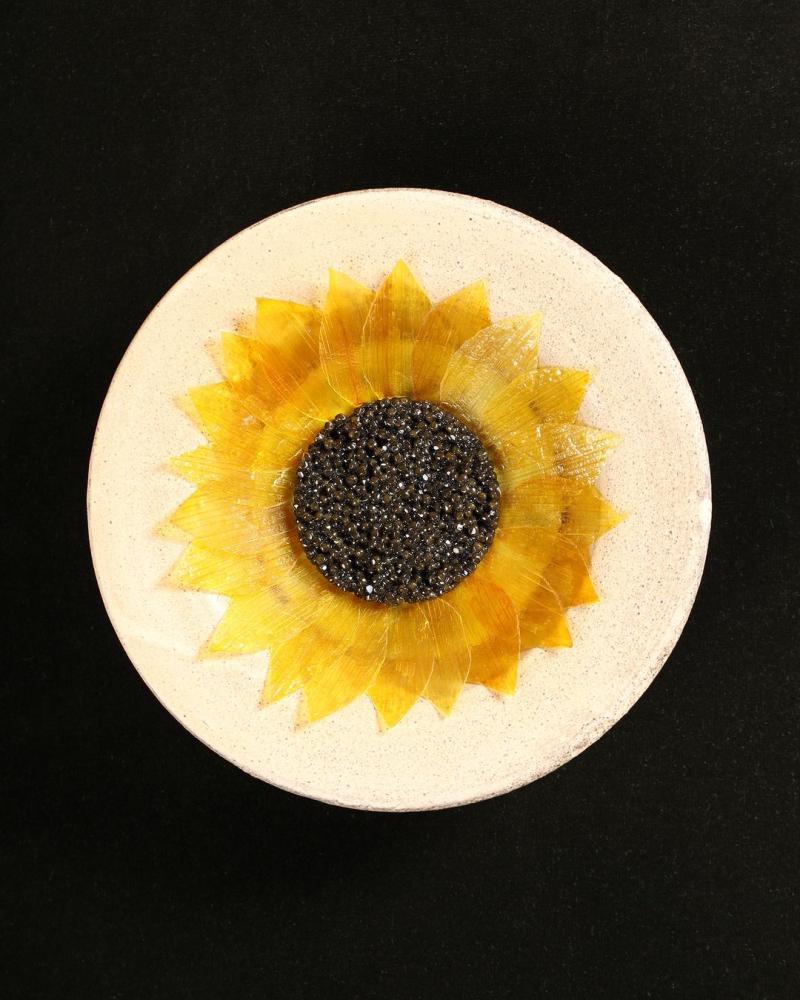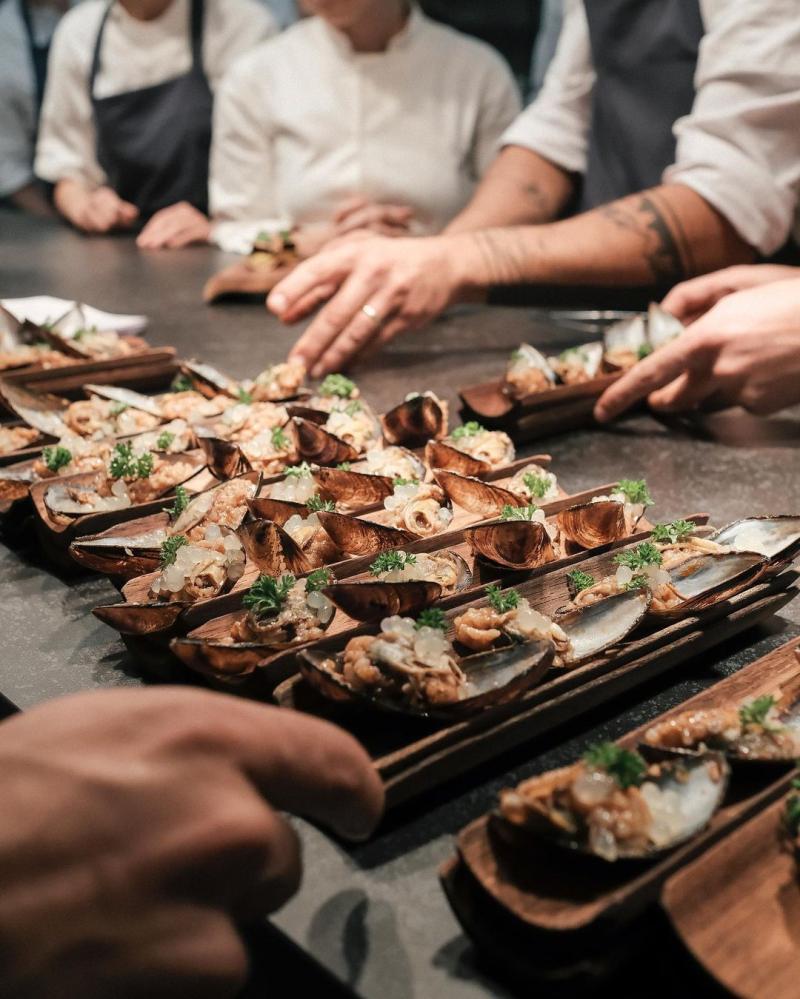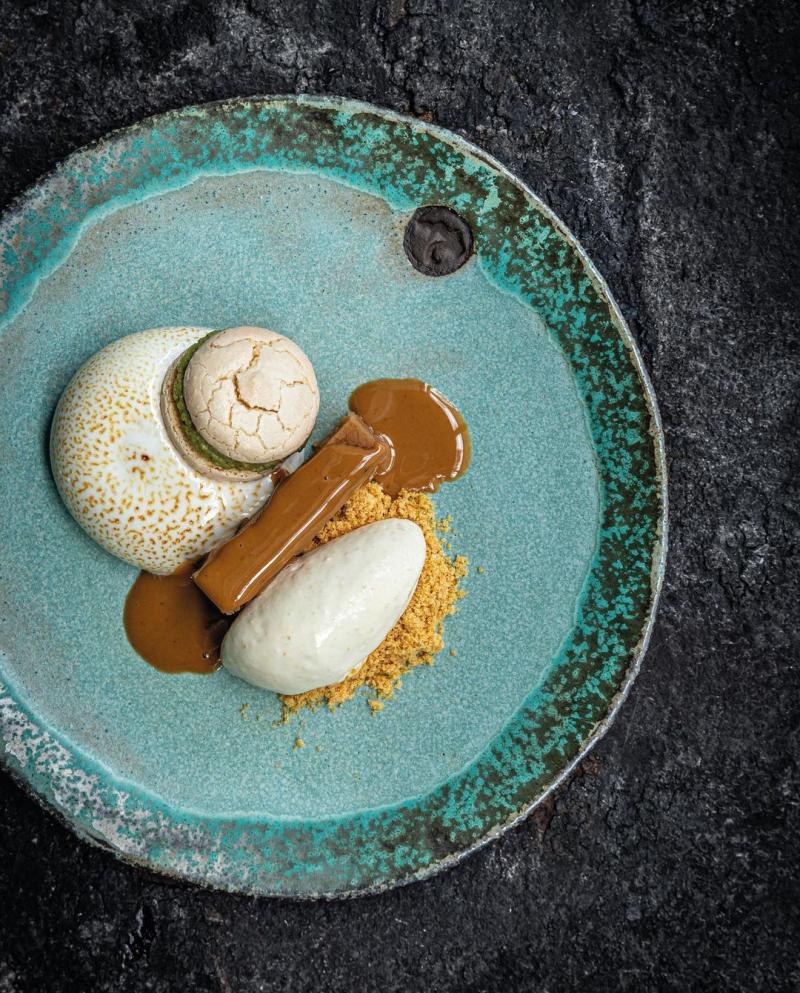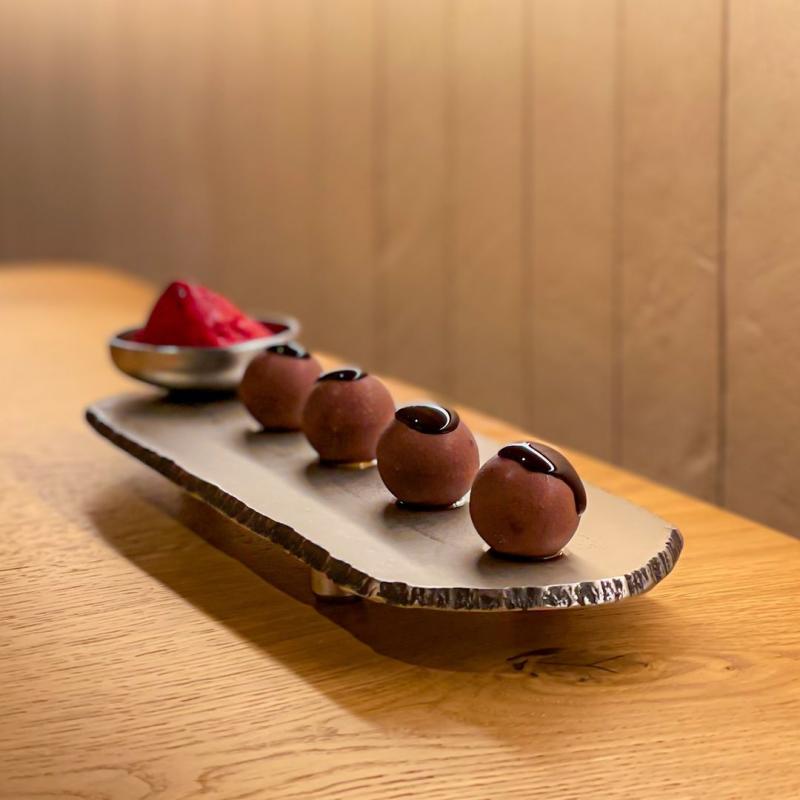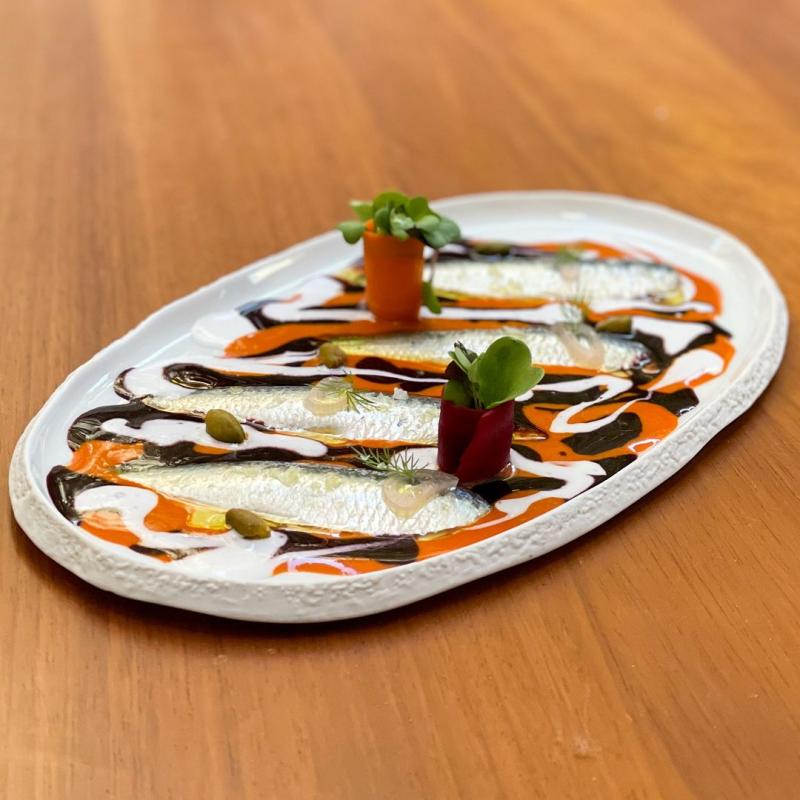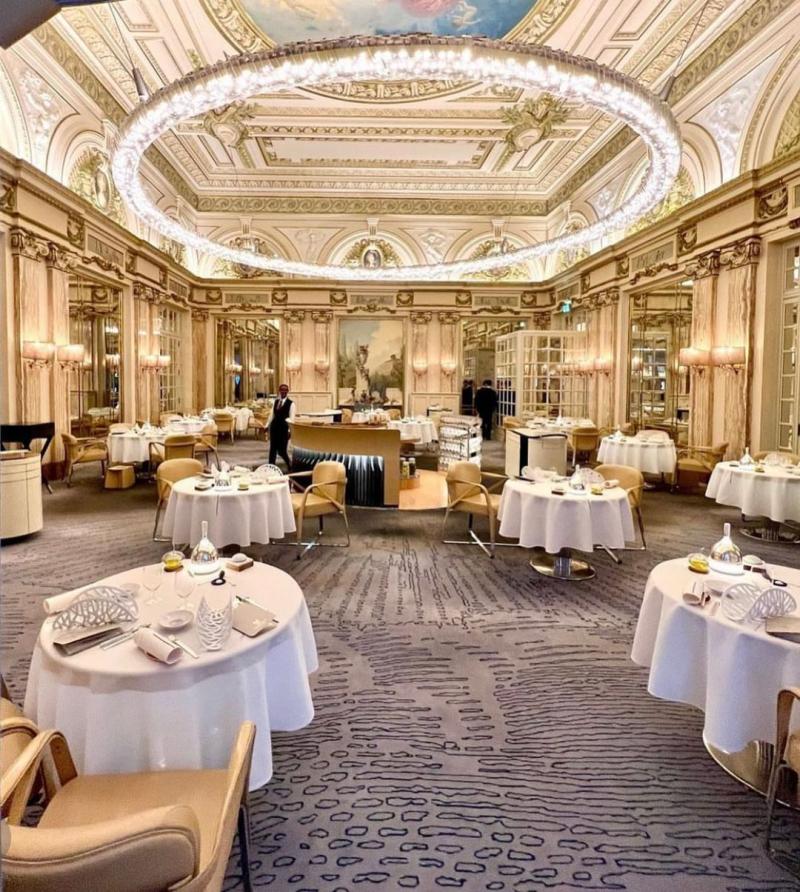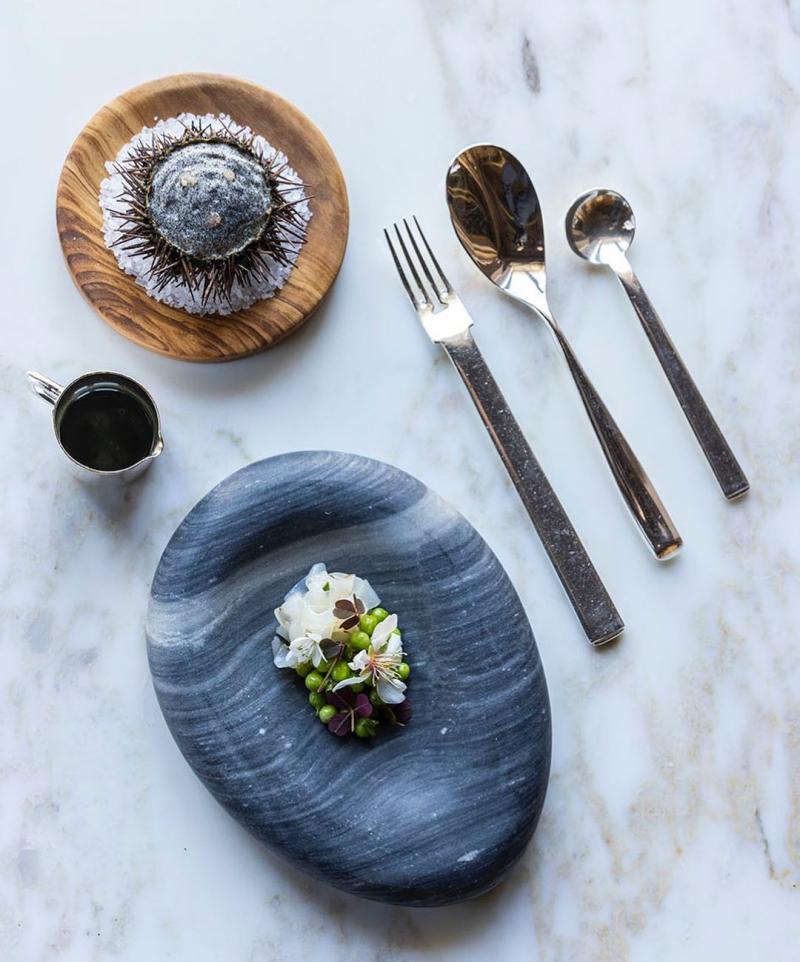A Culinary Tour of the Mediterranean
A Culinary Tour of the Mediterranean
Join us as we embark on the dream journey; finding the best restaurants across the northern coasts of the Middle Sea

You can understand why so many of the world’s most talented chefs fall so deeply in love with the Mediterranean, for the bounties it provides from the sea, certainly – the views of the shimmering blue, too, look beautiful from any port or coastline.
But, what makes that long and winding trail across the Med exciting is that it brings so many places and cultures along with it – local knowledge, global influences, traditional techniques, and modern ingenuity.
The restaurant of your dreams will be somewhere along that coast; you just have to know where to look.
Mirazur, France
For Glamorous Jet Setters
There are few places on the planet so harmonious and beautiful as Mirazur: a temple of fine dining in the small Cote d’Azur village of Menton, mere moments from the border with Italy. To arrive is to feel that this little piece of the Mediterranean is all yours. Built from the shell of a Belgian prince’s old villa, the restaurant places the sea centre-stage from the moment you set foot in the dining room. Giant glass panels surround the place, letting in bright light and sea air; from your table you can see yachts and boats puttering by. You could stare out into the great white open all day, if you so choose – the restaurant’s name, after all, means “to look out to the blue.”
All that staring might keep you from your food, and what a mistake that would be. The redoubtable Mauro Colagreco has helmed Mirazur since its opening in 2006, and in that time, he has formulated a style of cooking that is all his own. Having left a life in accounting back home in Buenos Aires, Colagreco dedicated himself to mastering haute cuisine, learning his craft under such culinary luminaries as Bernard Loiseau, Alain Passard, and the legendary Alain Ducasse (more on him later).
This tutelage shaped not only his craft – you have to be a talent to survive even one day in a kitchen like Passard’s L’Arpège in Paris – but his view of the natural world, and how it can flow through your food. You can see it on the plate at Mirazur: his dishes are elegant, yet bright and bombastic; the colour palette of the verdant foliage surrounding the restaurant is put back in front of you. You’re not tasting just lemon, but a Menton lemon, growing yards away from your table, and the bright pink of your langoustine comes from the algae clinging to the rocks on the shoreline. There’s a reason it was named the World’s Best Restaurant in 2019 – Mirazur itself is a product of the Mediterranean.
Torre del Saracino, Italy
For The Discreet
If seclusion and quietude are more your tempo, then sail down to Amalfi, to the small town of Vico Equense and its 1,300-year-old watchtower, and arrive at Torre del Saracino. You’re not likely to encounter too many fellow visitors there – tourists are often more drawn to Sorrento and Naples – but what you’ll find at Torre del Saracino is a sumptuous view of the coast and the mighty Mount Vesuvius puncturing the sky. From these medieval surroundings, you can’t help but feel a connection to the storied past of the continent, and to those who have stood where you are, admiring that view and the coastal breeze for millennia.
What that is not to say, however, is that the food at Torre del Saracino is old-fashioned; it’s anything but. The chef in charge, Gennaro Esposito, was just 22 years old when he opened the restaurant, guided only by the power of his ambition and the beauty of the produce he could get his hands on. As such, Esposito has been unafraid to celebrate supposedly “lesser” seafood: red mullet and horse mackerel (fish for the home, not the white cloth dinner table), and to elevate them with flavours from all over the region and the world.
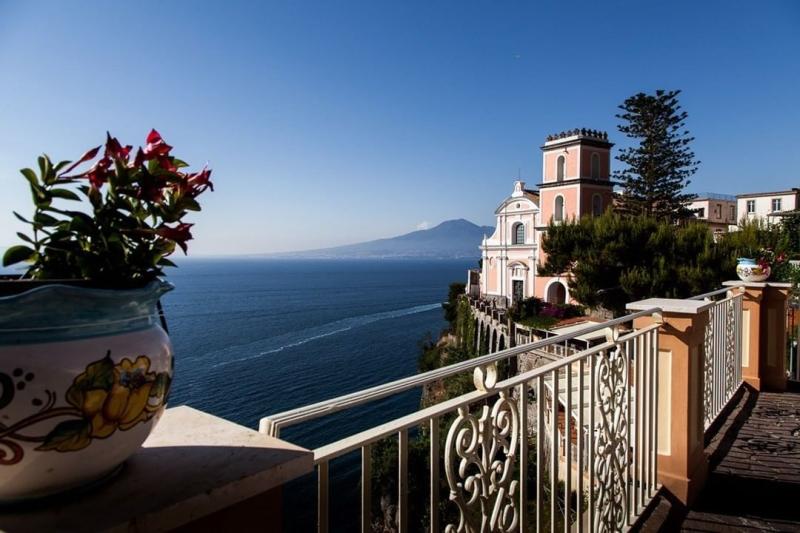
It’s not uncommon to find strong, strident flavours like tamarind or Calabrian chilli in Esposito’s dishes – flavours, again, that scarcely grace the plates of an elegant eatery. He is an iconoclast, but a trendsetter; what looks uncommon on the Torre del Saracino menu can end up commonplace on countless other menus just a few years later. And bit by bit, Esposito has carved out a world-beating reputation from his tower by the coast, earning two Michelin stars for his singular vision, with whispers that a third could come at any time. Such is the value of standing alone.
Ca Joan Altea, Spain
For Carnivores
There is, as they say, more to the Mediterranean diet than fish, fruit, and vegetables. For those of a more carnivorous persuasion, the tiny town of Altea – half an hour’s drive from trendy Dénia – is home to one of the finest steakhouses you could ever hope to stumble across: Brasería Ca Joan. The restaurant is an unashamed champion of Spanish meat in all its glory, scouted from all corners of the country. In each case, the meat is barely touched, and prepared for you in its simplest form, shaved into delicate wisps that melt on your tongue, or spread across sturdy country bread for you to sink your teeth into.
But the main event is, of course, the steak. You won’t find an overpriced, sub-par chunk of wagyu or kobe here, nor a bland bit of sirloin and a sad baked potato. In their place, Ca Joan serves only the finest Basque beef from younger cows, older cows, and oxen. Younger cows tend to be softer and more gently flavoured, the others notably beefier from more time spent grazing on the wild herbs and grasses of the Basque countryside. When they arrive at Ca Joan, they are not carved straight away. Instead, they hang in the fridges that line the back walls of the dining room, still swaddled in their fat. There, they hang for weeks – sometimes months – on end, developing the deep and complex flavour notes that set them apart from other cuts of meat.
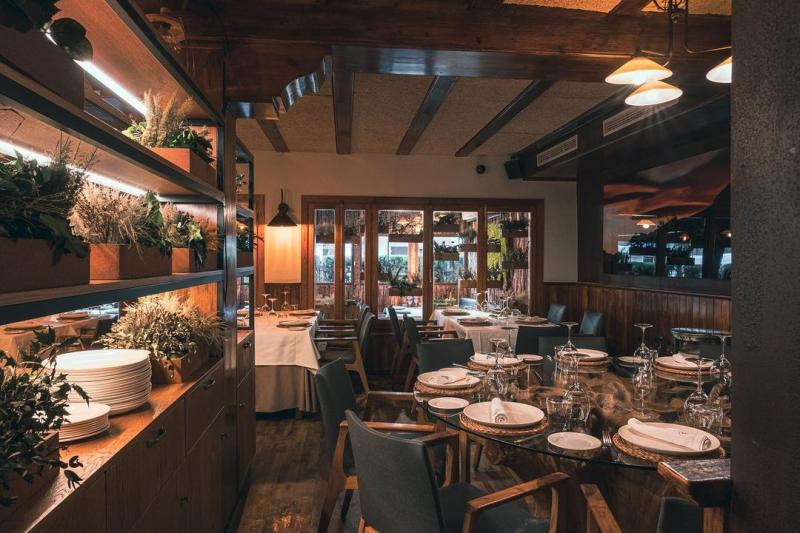
Carving time comes soon enough, and at Ca Joan, the trademark cut is the chuletón – a vertical slice along the rib serving up a sturdy beef chop that can satisfy a whole table. Over red-hot coals and seasoned with little more than a handful of salt, each chop is grilled to perfection, rested for a moment, then cut against the grain, so that each piece is as tender as can be. For a meat lover, it’s a paradise by the sea.
Aponiente, Spain
For the Seafood Specialists
You can find superlative seafood all over the Mediterranean, from the ritziest restaurant to the smallest, simplest shack – that much is undeniable. But there is nowhere as reverent, as innovative, as devoted to the possibilities of fish quite like Aponiente in El Puerto de Santa María, a tiny little port in the Bay of Cádiz. The irrepressible Ángel León – or as he’s known in Spain, “El Chef del Mar” (the chef of the sea) – heads Aponiente. The chef goes to extraordinary lengths to showcase the vast, unexplored wonders of the waters: bioluminescent plankton that glow in the dark, meringues made from coral, and foraged seaweeds that taste like everything from oysters to fried chicken.
Every course on offer at Aponiente comes from the sea – all 20 of them, from opening bites to petits fours, and everything in between. When you arrive to eat, you will see a fish tank, full to the brim with León’s first big innovation: marine charcuterie. Adjusting the techniques of artisan sausage makers, he developed methods to turn fish like sea bass, tuna, and mullet into sausages that put the finest cured cuts to shame.
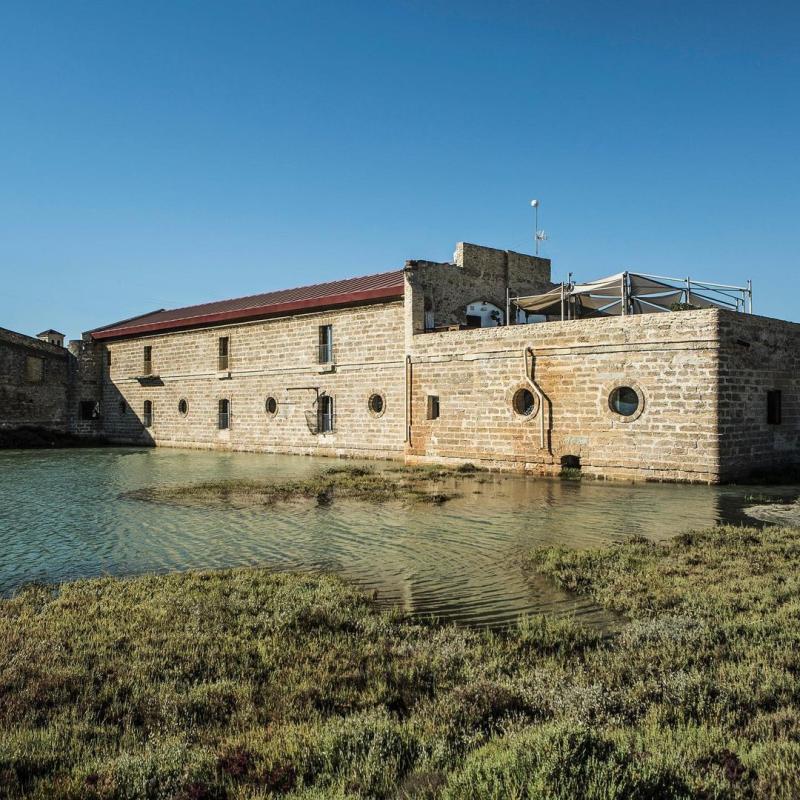
You would think, from the wide array of oceanic produce on display at Aponiente, that León is an ideologue for all things seafood; that he eats nothing but the stuff, and wants you to do the same. But the culinary whiz is, in fact, the opposite – he has stated many times that his dream is to find so many ingredients from the waters of the Mediterranean that he can leave fish entirely off his menu. As such, León scouts for new ingredients every single day, cataloguing and experimenting with them, pushing the boundaries of the possible. And with three Michelin stars to his name, his daring approach is paying dividends.
Delta, Athens
For Those Seeking 'The Next Big Thing'
It may seem unusual to deem a restaurant that already has two Michelin stars as “up and coming,” but Delta isn’t a restaurant competing to be the best restaurant in Greece; it has ambitions of being the best in the world. Conditions are ripe for a new trailblazer. The focus of fine dining has shifted from France to Spain to Scandinavia over the last 20 years, with imaginative, daring restaurants like El Bulli and Noma changing the game and leading their eras. El Bulli has now been closed for over a decade and has just reopened as a museum. Noma, the restaurant that succeeded it in the Top 50 lists, has announced that it, too, will be closing its doors for regular service in 2024.
No other restaurant has stepped to the plate, but Delta has the pedigree, and the philosophy, to take that throne, and lead the 2020s. Found on the fifth floor of the Stavros Niarchos Foundation Cultural Center, Delta overlooks the Mediterranean from a radically different perspective than any other restaurant mentioned here so far. The placid waters of the Gulf of Aegina have served as a thriving point of cultural exchange since the dawn of civilisation; the nearby port of Piraeus was the home of the Athenian war fleet that set sail to fight the Persians and Spartans. It would not be the first time that someone has conquered the world from this point.
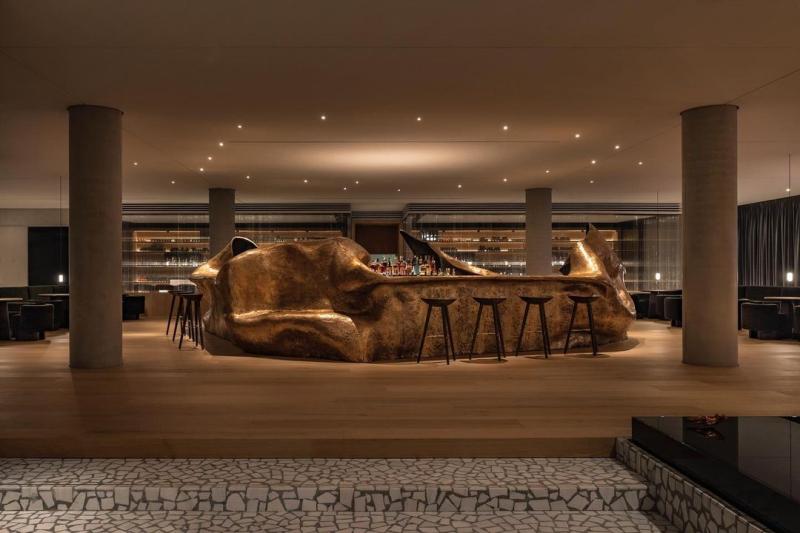
The food at Delta is a radical manifesto for a “new” Greek cuisine, one that draws deeply upon history and produce, but also embraces the future and the cutting-edge. The two chefs in charge, Thanos Feskos and George Papazacharias, both learned their trade in Scandinavia, before returning home to make their country a culinary superpower, with Delta at the vanguard. Their dishes are shocking but playful: sea lettuce turned into filo pastry, fake sea urchins with edible shells, even a “duck’s head” filled with liver and Greek blueberries. If you think you’ve seen it all before, go to Delta – it won’t be long until the world follows behind you.
Neolokal, Istanbul
For the Eco-Concious
Across the Bosporus Strait, on the furthest edge of the Mediterranean, you will discover the very best restaurant in Istanbul: Neolokal, a restaurant that exists to revive techniques and ingredients that have not been used in centuries. Neolokal and its chef-owner, Maksut Aşkar, are among the leading proponents of the Slow Food movement – a collective of chefs, farmers, producers, and diners all over the world aiming to eat entirely locally and seasonally, in a way that protects and preserves both food’s history and its future against globalisation and climate change.
Driving this aim to “return to our roots,” as Aşkar puts it, is Neolokal’s farm 20km out of Istanbul, which produces all of the restaurant’s grains and vegetables – the farm is held up as a sparkling example of sustainable agriculture, where a group of experienced farmers tend acres of land, and sell only the best produce to the restaurant when it is ready to be plucked from the vines or dug from the earth. Aşkar can tell you, with confidence, the name of the person who sold him each ingredient on the menu, as well as how they met and how they grow, treat or prepare their produce.
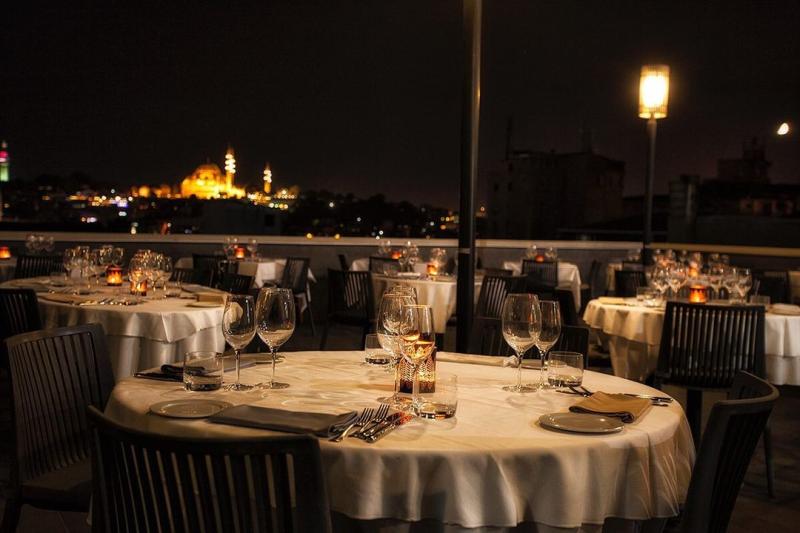
These simple, humble fruits and vegetables are then reworked into all manner of thrilling dishes that nod towards Turkey’s rich imperial past. From the strength of these creations, Neolokal’s reputation is now a global one, but Aşkar doesn’t hoard his genius. Every single one of his recipes are open-sourced, so that when you return home and read through them at your own leisure, learning those centuries-old Ottoman techniques that the restaurant has saved from irrelevance.
Compartir, Spain
For the Artsy Bohemian
When El Bulli closed its doors for the last time as a restaurant in 2011, Ferran Adrià retired from the stoves, but the three lieutenants who had kept his kitchen running for 30 years – Oriol Castro, Eduard Xatruch, and Mateu Casañas – still had ambitions of their own. Having worked in the town of Cala Montjoi where El Bulli was situated all that time, they had got to know that particular corner of the Catalan coastline, the Cap de Creus peninsula, incredibly well. And just up the road from Cala Montjoi, the only road in the area, was the town of Cadaqués – a tiny village that is perhaps more enigmatic and inspiring than anywhere else along the Mediterranean.
It has been, at times, a smuggling point between France and Spain and a hideout for pirates, plus it has its own dialect of the Catalan language, understood only by the locals. Additionally, it has played host to countless artists and writers, from Dali, Picasso, and Miró, to Marcel Duchamp, René Magritte, and even Walt Disney. For the El Bulli trio, who had worked and learned under perhaps the greatest culinary artist of all time, it was the perfect next step.
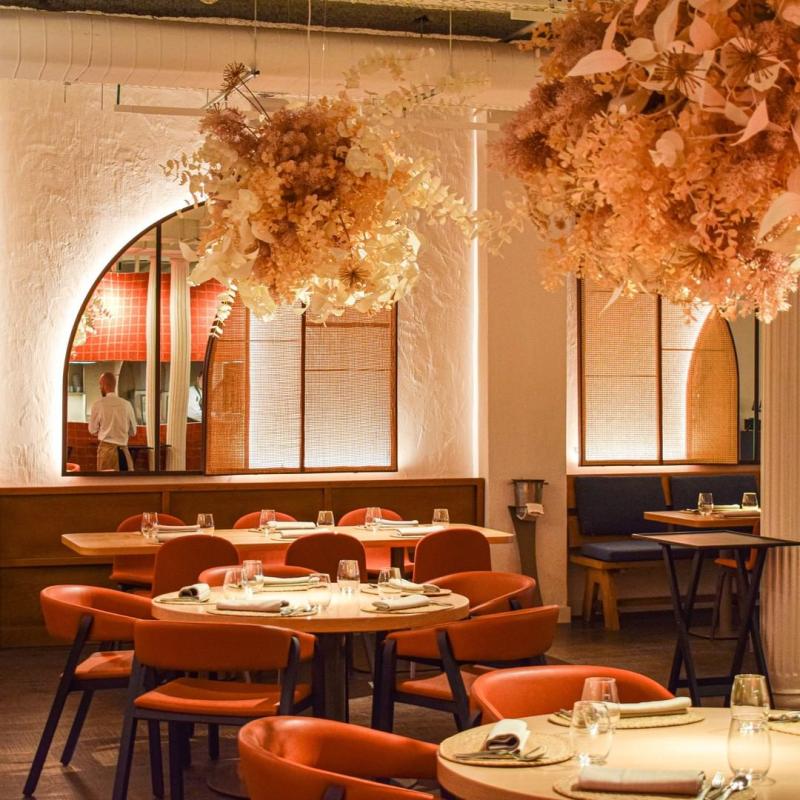
So, the trio opened Compartir, which translates as “to share.” The food is nowhere near as avant-garde as their former home – they save that for their place in Barcelona, Disfrutar, which is now number two in the world on the 50 Best. Compartir, instead, makes use of all the phenomenal produce available to El Bulli at the height of its fame, and serves it all simply: as a rustic Catalan roast, a smart salad, or a pan of baked rice. Everything is designed to be picked at, informally, over long conversations, cold drinks, and the warmth of the sun. A restaurant for artists, rather than art.
Le Louis XV, Monaco
For the Classic Experience
As new trends, trendy destinations, and hot young things come and go, it is easy to forget the places that have kept their standards at the highest heights for the longest time – the classics for a reason. Even today, 36 years since it first opened its doors, there’s still a case to be made that Le Louis XV is still the very best place on Earth for you to eat. It is the flagship restaurant of one of history’s most decorated chefs, the unfaltering Alain Ducasse, who was challenged by Prince Rainier of Monaco to turn Le Louis XV into a three Michelin-starred restaurant in four years. He did so in just 15 months, and has held onto those stars for more than three decades.
The interior of Le Louis XV is still so far beyond that of any other restaurant, that it feels almost unfair to compare it to anywhere else. Soaring ceilings adorned with intricately crafted mouldings, Corinthian columns, gilded mirror frames, and majestic chandeliers – the whole place exudes an opulence befitting of Monte Carlo's reputation, closer to a cathedral chamber than a dining room. It is pure, unrestrained glamour, perched on the edge of Casino Square.
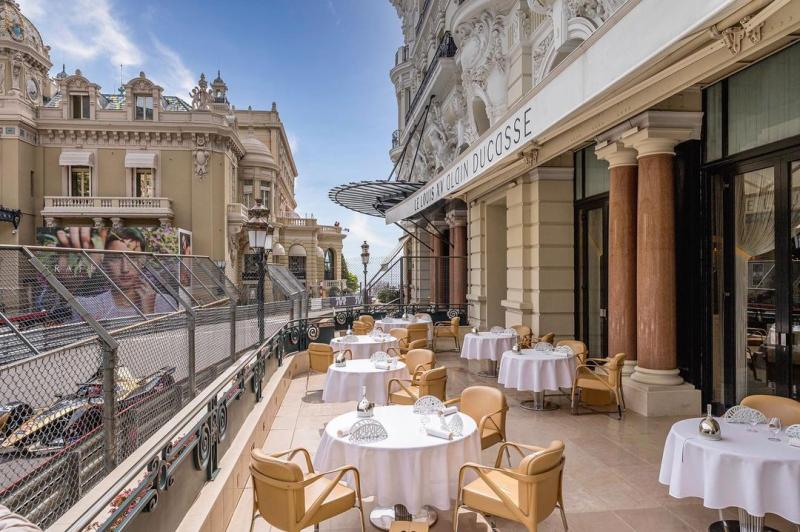
Yet, the food is spectacularly elegant and forward-thinking. Ducasse’s culinary philosophy has moved with the times, and so his restaurants place an emphasis on naturality and purity – a carrot or a courgette is treated with the same care as a Périgord truffle or a tin of caviar. This isn’t to suggest that the latter ingredients don’t feature in the menu – they most certainly do – but to say that luxury shines through every plate, be it a smoked blue lobster or a potage of Provençalvegetables. You can trust Le Louis XV to keep a tight hold of its three stars for another 30 years; as a once-in-a-lifetime experience, you can do no better.


